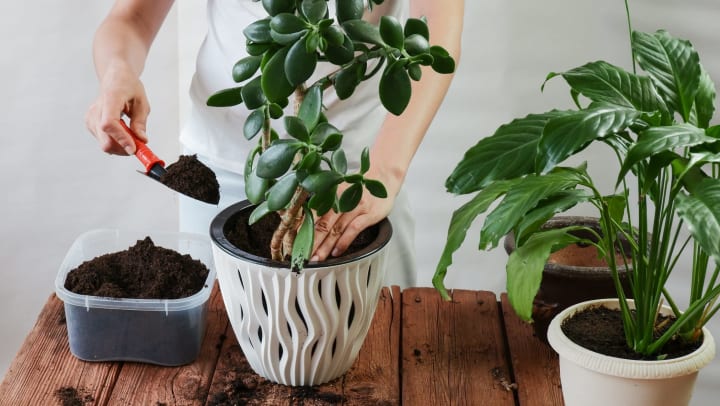Repotting houseplants is an important part of keeping plants healthy. In general, plants need to be repotted once every 12-18 months. Repotting is simply the process of replacing a plant’s soil in order to give it more nutrients – it doesn’t mean you necessarily have to move your plant into a new pot.
Don’t be nervous about this process. It’s very simple and totally safe for your plant, as long as you follow a few simple steps.
Gently Remove the Plant from Its Current Pot
This is perhaps the one step that makes people nervous about repotting. But remember, as long as you are careful, your houseplant will be fine. Plants are tougher than most people realize. Simply turn your pot onto its side and give the plant a gentle tug from its base (just above the soil level). If it doesn’t pull out easily, give the pot a few rolls from side to side, or tap gently against the base or along the sides with the heel of your hand until the plant comes loose.
Massage the Roots
Repotting is a good time to give roots a little space to breathe and grow, so gently loosen them with your fingers. You can also trim any stringy roots that have grown extra long. If your plant has developed a dense, tight root ball, don’t be afraid to dig in there and push the roots apart and/or do a little pruning.
Determine Your Plant’s Needs
If your plant has developed a tight root ball, that’s an indication that it needs a bigger pot. You also might need a bigger pot if your plant seems to dry out quicker than it used to, if its growth has slowed, or if roots are starting to grow out of the drainage hole in the bottom of the pot. If, however, your plant has shown no signs of growth stress, then you can use the same pot.
Discard the Old Potting Soil
You’ll want to discard most of the soil around your plant, or at least one-third of it, since the plant has likely consumed most of the nutrients in the old soil.
Replant & Water
Place your plant in the pot, fill in around it with new potting soil, and give it a bit of water. All done!
Follow The Slate blog for more tips and tricks on houseplant care and small-scale gardening.


